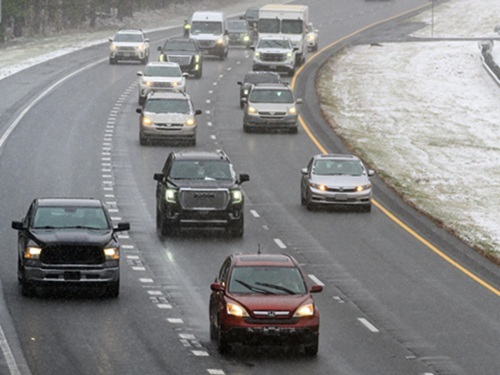A new report by the Governors Highway Safety Association, with support from insurance firm State Farm, details the potential benefits of traffic safety cameras – especially in terms of effort to reduce dangerous driving behaviors such as speeding, red-light running, and school bus stop-arm violations.
[Above image by GHSA]
GHSA’s report said that a growing number of states, cities, and towns are using or considering using automated enforcement technology to address risky driving behaviors. That includes efforts by Pennsylvania legislators to extend a pilot work zone speed camera program that helped reduce fatalities in work zones.

“We’re losing far too many of our friends and loved ones to preventable traffic crashes. Safety cameras can help change that,” said GHSA CEO Jonathan Adkins in a statement.
“The data and research clearly show that automated enforcement reduces the dangerous driving behaviors that needlessly kill people every day,” he added. “GHSA and State Farm have teamed up to help communities realize the vast safety benefits that automated enforcement offers, while also emphasizing the need for these programs to be community-based and transparent.”
[Editor’s note: State departments of transportation around the country are testing a variety of traffic camera systems to improve work zone safety, including the Arkansas Department of Transportation and the New York State Department of Transportation.]
The report makes several recommendations for states and traffic safety partners to identify and overcome key barriers for more effectively implementing an automated enforcement program, including:
- Focus on safety: Revenue generated by safety cameras should be used to support program start-up and maintenance costs, with any excess revenue dedicated to traffic safety initiatives such as infrastructure enhancements or increased education.
- Proper site selection: Cameras should be installed in locations that have crash, injury or fatality data justifying their use, particularly if these incidences involve vulnerable road users. Determining if other countermeasures, such speed calming, could be deployed to address the traffic safety problem should also be considered.
- Community participation and engagement: Members of the community where the safety cameras will be deployed must be part of the planning and implementation process. Meaningful public engagement that begins early can help bolster public acceptance and trust.
- Equity: Research has repeatedly confirmed that people of color are disproportionately impacted by traffic crashes and deaths. All decisions about safety camera programs – including public engagement during the planning process, where cameras are placed and how fines are structured – should be viewed through an equity lens.
- Transparency and accessibility: Jurisdictions should share the data used to inform the decision-making process when considering whether to create an automated enforcement program. Where and when the cameras will be deployed should be highly publicized, so drivers are not caught by surprise.
- Reciprocity agreements: Jurisdictions should create reciprocity agreements with neighboring states that address out-of-state violators who fail to pay traffic safety camera fines.
GHSA noted it plans to host a webinar, moderated by Adkins, on December 19 to highlight the report’s findings in more detail. To register for that webinar, click here.
 Nation
Nation
Registration Open for AASHTO’s Winter Rail Meeting
December 19, 2025 Nation
Nation

